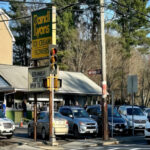The following was sent to us by a reader – Good morning, Andrew MacNichol and CPDC (and town manager, assistant town manager and Select Board, who are cc’d):
I have two major questions that I planned on asking Weds night, so I’m giving you a heads up, because the nature of them makes them a bit complex to ask in a public forum.
Apologies in advance for the length of this email! I have separated each section by row of asterisk and bold-faced headers.
My areas of questions relate to:
(1) The town’s interpretation of what is meant by “tax parcel” under the MBTA communities law, and
(2) Why Reading appears to be refusing/reluctant to do what other communities are doing – namely, making use of existing multi-unit residential, including both apartment and condo complexes, to help satisfy the housing count..
********************************************
- Definition of “single tax parcel”
In Andrew’s 2/20/2024 memo to CPDC (posted to town website), it refers to there being “three large single parcel developments” in Reading – it is not clear which ones are intended – and the memo adds that and that we cannot rezone over projects that are on a “singular tax parcel”. Andrew also has given me similar comments in person, that despite its size, we could not rezone over a project like Reading Woods without including a neighboring street, because it is not “neighborhood scale” and that MBTA communities does not allow rezoning of just a single property.
My 1st question to you is on what basis are you calling properties Reading Woods a single property or single tax parcel. What is your legal basis? And why do you think MBTA communities does not allow rezoning over existing large residential complexes? Because I do not understand the legal basis for your views. They appear to be in error, at least for these reasons:
(a) The law defines tax parcels in a different way than appears to be listed in the memo– each condominium unit is a single tax parcel,, not the entire condominium development.
(b) Multiple other communities (including but not limited to Winchester, Burlington, Woburn, Wilmington, etc.) are rezoning over existing multi-unit developments to help satisfy their obligations, including apartment complexes not just condos, as long as those parcels are at least 5 acres in size and/or are part of a contiguous 5-acre size district – and they are not always including more than just these parcels in the overlay.
1st, I am very confused why you (and, thus, the town) appear to be referring to some complexes, like Reading Woods or Johnson woods, as a “singular tax parcel” . The above-listed memo states as follows [emphasis added]
The state advises that “for purposes of compliance with Section 3A, a multi-family zoning district should be a neighborhood-scale district, not a single development site on which the municipality is willing to permit a particular multi-family project.” The existing multi-family developments completed in recent decades in Reading are individual projects each on a singular tax parcel, so in order to use them for compliance, portions of the surrounding single-family districts would have to be included in a proposed district in order to create a district large enough to get to the State definition of neighborhood-scale. While we understand and support capturing existing multi-family development where plausible within the limitations of the law, the prior development patterns of Reading mean that we do not have an existing neighborhood-scale district for multi-family outside of Downtown
I take issue with your characterization as indicated in the highlighted areas above, especially the final sentence, because those characterizations seem to run counter to Mass General Laws. In particular, you are referring to projects outside of the downtown, such as Reading Woods (or Johnson Woods) as being “individual projects each on a single tax parcel” . That statement seems to be inaccurate based on my understanding of available public information. Reading Woods, like Johnson Woods, is a parcel containing tens to hundreds of condominium units, some detached, some part of a building. The town assessor database lists each unit individually for tax purposes. Furthermore, Mass General law Chapter 183A defines many aspects of condominiums, and section 14 of this chapter describes how condominiums are classified for tax purposes (see https://malegislature.gov/Laws/GeneralLaws/PartII/TitleI/Chapter183A/Section14#:~:text=Each%20unit%20and%20its%20interest,to%20be%20a%20taxable%20parcel. This chapter states, in pertinent part [emphasis added]
Section 14: Taxation and betterment assessments; lien
Section 14. Each unit and its interest in the common areas and facilities shall be considered an individual parcel of real estate for the assessment and collection of real estate taxes but the common areas and facilities, the building and the condominium shall not be deemed to be a taxable parcel.
As I read that part of the law, each unit of a condominium is its own individual tax parcel, so the entirety of Reading Woods, for example, is not a single tax parcel, as you seem to view it, but instead is a collection of hundreds of tax parcels (over 400 tax parcels) . Indeed, the assessor database lists each unit individually for tax purposes (same with Johson Woods). This is in contrast to Reading Commons, which appears to consist of two large tax parcels.
Can you explain the legal basis for why you are viewing a development like Reading Woods as a single tax parcel? Am I misunderstanding what our law recites?
Multiple reasons why Reading Woods ought to be considered for overlay zoning to help with MBTA communities compliance (and I live right near this complex, FYI):
- Walkable to Joshua Eaton School
- Walkable to shopping, parks, and amenities (Calareso’s, multiple restaurants, Cal’s, Sturges Park)
- Walkable to Medical facility (urgent care in Stoneham)
- Can be combined even with an adjacent parcel (Greater Boston Real Estate board property at 68 Main) if there is belief (mistaken IMHO) that this is a “single parcel” solution
- Not likely to be rebuilt into something else, so unlikely to result in actual housing and burden on our infrastructure
- Rezoning this property would account for nearly all of our 60% of units outside the ½ mile (if you double the zoning)
- Rezoning overlay over this preserves our existing commercial
If apartment complexes also could be considered (as I believe they could be, seeing as Burlington is doing this), Reading Commons has similar advantages:
- Walkable to both Joshua Eaton and Barrows schools
- Walkable to shopping, parks, and amenities ( Sturges Park, Kohls, Lowes, Woburn Post office, Russell Farms, etc.)
- Walkable to medical facility (urgent care at Kohl’s plaza)
- Not likely to be rebuilt into something else, so unlikely to result in actual housing and burden on our infrastructure
- Rezoning this property would account for significant part our 60% of units outside the ½ mile (if you double the zoning)
- Rezoning overlay over this preserves our existing commercial
From what I heard in the “preview” of the forum, at Monday 6/10/2024 CPDC meeting, you are not considering any rezoning of large multi-unit residential outside of downtown. That seems overly limiting and counter to the interests of Reading residents. It is counter to what our neighbors are doing (see part #2 below)
Why are you not considering this in the proposed plans – it solves nearly 60% of Reading’s requirements?
*********************************
- WHAT OTHER COMMUNITIES ARE DOING – why can’t we follow their lead?
Other communities nearby are taking a very different view of their existing multi-unit developments. The planners in those communities are leveraging existing multi-unit developments as much as possible to minimize impacts of MBTA communities on their communities. These communities also seem to be starting with a townwide goal and mission to minimize impact on their towns, versus providing compliance in excess of the minimum, as is being proposed here.
Can you explain why town planning and our CPDC seem to be avoiding the path many other communities are taking, to rezone over areas already developed into multi-unit and not likely to be redeveloped?
Town manager and assistant town manager – what direction are you giving our community services/planning on this?
As but a few examples to compare and contrast with Reading’s approach (so far):
BURLINGTON (see https://homenewshere.com/daily_times_chronicle/news/burlington/article_7219d83e-071a-11ef-b052-73686d2001f7.html?fbclid=IwZXh0bgNhZW0CMTAAAR1i5RrzGbvphDTR7iGU_Q-1272E2j-1_xh4AKmcWbbSEoOiA-JT_iiNDy0_aem_AUPpOn8YErgvIDO6r8jIJ9_dSQyP-H9Wjl4HEgnkFkUQTthNtc1pObt0U2SJHvuUrpPP3vBWF5oRuivyg5AfpHyP ). This plan passed their town meeting. To quote part of the article [emphasis added]
“The comprehensive plan steered by the Planning Board also had contributions from Town Meeting members, developers, business representatives and concerned citizens, with a common mission to meet the state’s goals for denser housing while minimally changing the character of the community.
The end-result manufactured over 50 acres by adding overlays on top of much of Burlington’s existing multi-family plots, like the Lifetime Living apartments and the Beacon Woods Condominiums, and adds a multi-family overly on a section of commercial properties between Middlesex Turnpike and Great Meadow Road.”
WINCHESTER (see https://homenewshere.com/daily_times_chronicle/news/winchester/article_09ce080c-0703-11ef-b067-f30d55d53846.html?fbclid=IwZXh0bgNhZW0CMTAAAR0BYqP-tYKxyfGXW2JRTbC50U70sMeX-ladcxuwZAhctqc0GHSmAtdLSxU_aem_AUNWujU2gLBZAF3eU4wiMZqxz5kzxnELYoTCcHRSdIFaFWfqRcB8gOL6tD03Xc_FMuoqlPd_16AFQlsuKGstTtHg ). That article states:
“”the process to create this new district took three years (going back to previous Town Planner Brian Szekely) and included 26 meetings, five public information sessions, four district revisions, plus the creation of ZRAC with 10 members and three consultants.
The MOD is broken up into four areas: 1 consists of the North Main Street area, 2 consists of the North Wedge Pond condos, 3 consists of Stop & Shop, and 4 consists of the Parkview condos.”
WOBURN (preliminary plans) see https://homenewshere.com/wilmington_town_crier/news/article_3954934e-188c-11ef-8b63-bb5ee547ebe6.html . That article states:
“Cashell [Woburn’s Planning Director] and Concannon [Woburn’s mayor]at the public hearing explained the rezoning effort is being explored as Woburn’s leaders try to find the least impactful way to comply with the state’s controversial “MBTA Communities” regulations…According to Cashell, his current thinking in regards to the zoning change is that Woburn take steps to meet EOHLC’s technical requirements, which don’t require city officials to make a determination as to whether future building activity makes economic sense for developers…As such, the overlay district can be extended around pieces of land where the construction redevelopments have already recently taken place or where the construction of new housing may be viewed as impractical…“Maybe something will be built. But there’s no restriction on a community having an overlay district in an area that already has a [housing development] on it,” he stated. “So for example, that multi-family development on Atlantic Avenue by the corner of Commerce Way, nobody is going to redevelop that particular site [again so soon after housing was just put up].” “
***************************************************************
As the above shows, multiple neighboring communities are rezoning over multiple existing multi- unit complexes (including so-called single tax parcels like apartment complexes) to reach compliance, to reduce minimize impact on communities and possibly the chances that future housing would be built there – a practice that the memo at p. 3 refers to as an “insidious goal to ‘game the system’ ”
Insidious means treacherous, crafty – it seems that the memo is implying the other communities are gaming the system even though they are following the law as written, and that residents here who seek such goals are being “insidious”. I have to confess as a resident I am both insulted by and chagrined by use of this term. Moreover:
–Is it “insidious” to take legally allowed tax breaks?
–Is it “insidious” when a developer comes to Reading and minimally complies with our zoning bylaws?
Of course not. Compliance is compliance.
Why is it “insidious” for Reading to follow the law in the way that other communities are doing, to minimize impact on our community?
Thank you for your patience in reading this far! I look forward to seeing you Wednesday evening.
Marianne McLaughlin-Downing
13 Heather Drive










